#tolowa dee-ni'
Text
The Tolowa Dee-ni’ Nation, Resighini Rancheria, and Cher-Ae Heights Indian Community designated the first ever Indigenous Marine Stewardship Area (IMSA) in the U.S. along the northern California coast.
The tribes plan to steward nearly 700 mi2 (1,800 km2) of their ancestral ocean and coastal territories from the California-Oregon border to Little River near the town of Trinidad, California.
As sovereign nations, the tribes say they’re not seeking state or federal agencies’ permission to assert tribally led stewardship rights and responsibilities; rather, they want to establish cooperative relationships recognizing their inherent Indigenous governance authority.
The tribes aim to restore traditional ecological knowledge and management practices that sustained the area’s natural abundance before colonial disruption.
#!!!!#good news#science#environmentalism#nature#environment#animals#conservation#indigenous people#california#stewardship#indigenous peoples#usa#climate change
2K notes
·
View notes
Text
Indigenous People's Day

DR. HENRIETTA MANN
Cheyenne
On this Indigenous People’s Day, we are featuring Matika Wilbur’s recent publication Project 562: Changing the Way We See Native America, published by Ten Speed Press in 2023. Wilbur (b. 1984) is a visual storyteller and member of the Swinomish and Tulalip peoples of coastal Washington. She holds a degree from the Brooks Institute of Photography alongside a teaching certificate that has shaped her style of educating through narrative portraits.
Project 562: Changing the Way We See Native America, a book born from a documentary project of the same name, resolves to share contemporary Native issues and culture. In 2012 Wilbur set out from Seattle to visit and photograph all 562 plus Native American sovereign territories in the United States.
Wilbur’s engagement with the communities she visited resulted in the creation of hundreds of dynamic portraits and documentation of conversations about “tribal sovereignty, self-determination, wellness, recovery from historical trauma, decolonization of the mind, and revitalization of culture.” She refers to her portraiture approach as “an indigenous photography method” that includes several hours and sometimes days of interaction with the participants, an exchange of energy and gifts, and asking sitters to choose their portrait location. The outcome is a stunning collection of Native narratives and portraits.
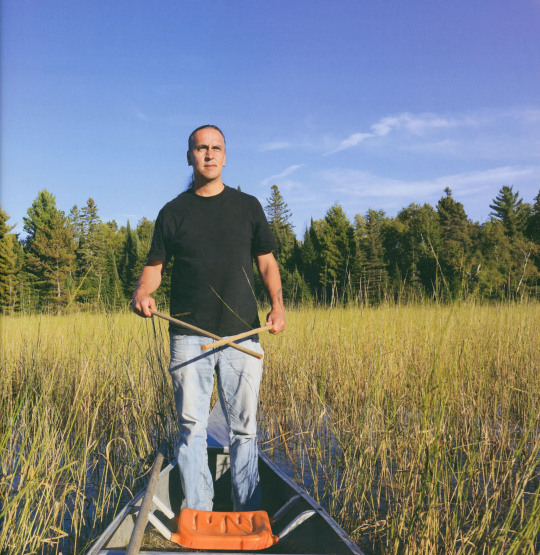
GREG BISKAKONE JOHNSON
Lac Du Flambeau Band of Lake Superior Chippewa Indians
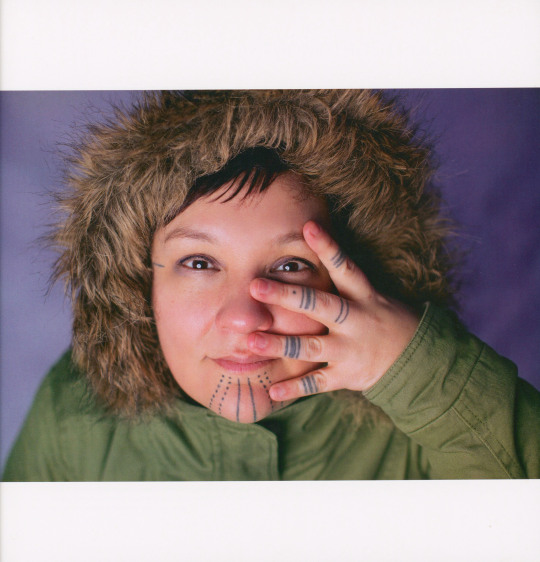
HOLLY MITITQUQ NORDLUM
Iñupiaq
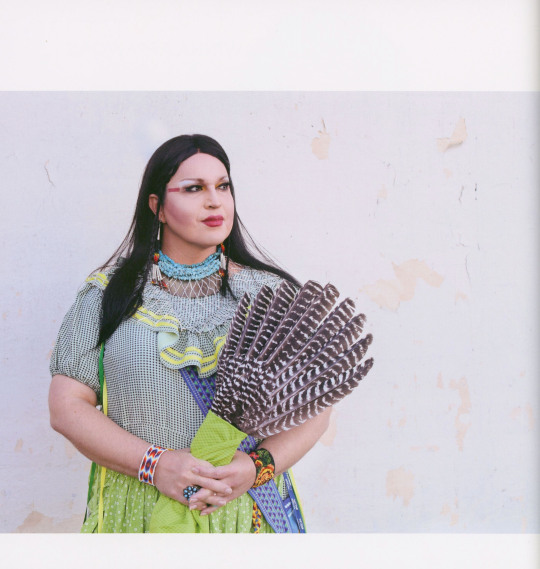
J. MIKO THOMAS
Chickasaw Nation

MOIRA REDCORN
Osage, Caddo

HELENA and PRESTON ARROW-WEED
Taos Pueblo/Kwaatsaan, Kamia
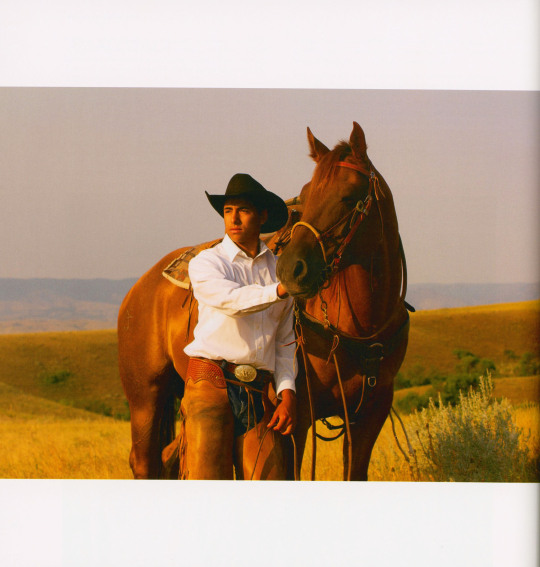
STEPHEN YELLOWTAIL
Apsáalooke (Crow Nation)

LEI'OHU and LA'AKEA CHUN
Kānaka Maoli
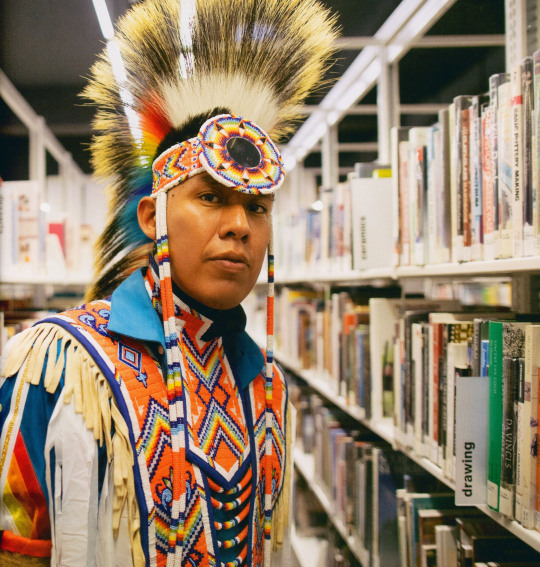
ORLANDO BEGAY
Diné
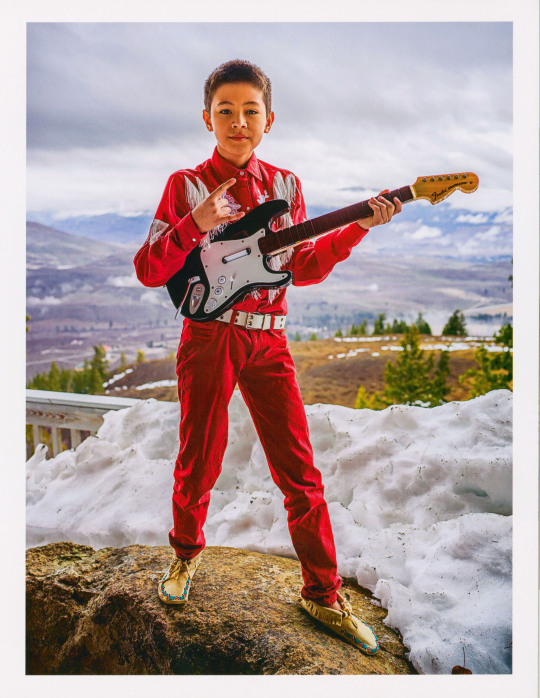
KALE NISSEN
Colville Tribes
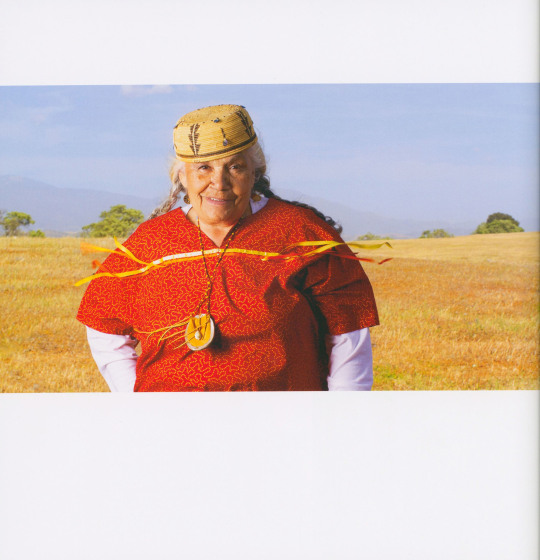
GRACE ROMERO PACHECO
Santa Ynez Band of Chumash Indians
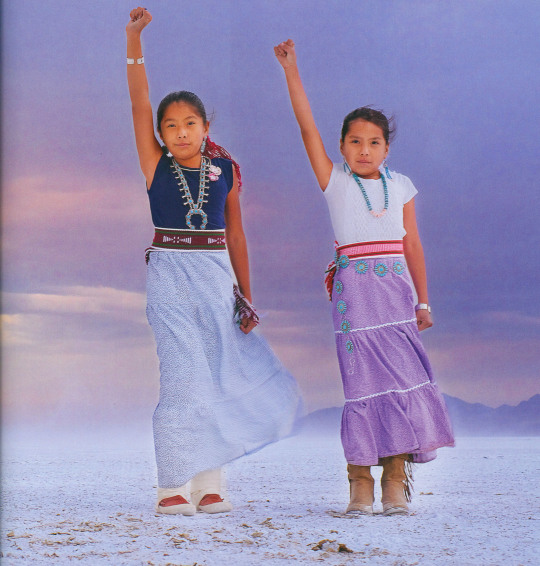
ISABELLA and ALYSSA KLAIN
Diné
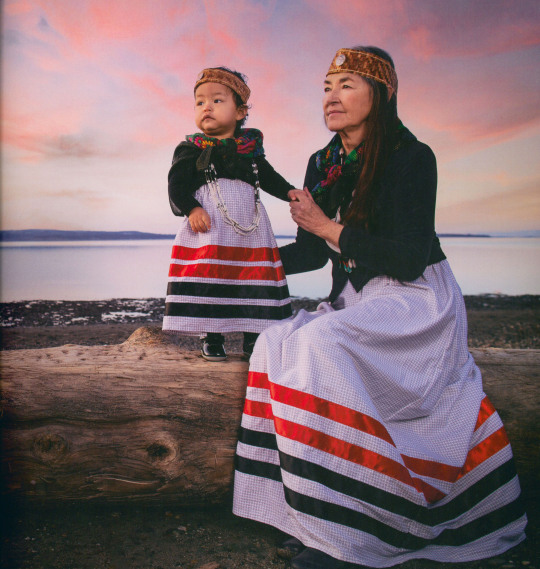
NANCY WILBUR
Swinomish
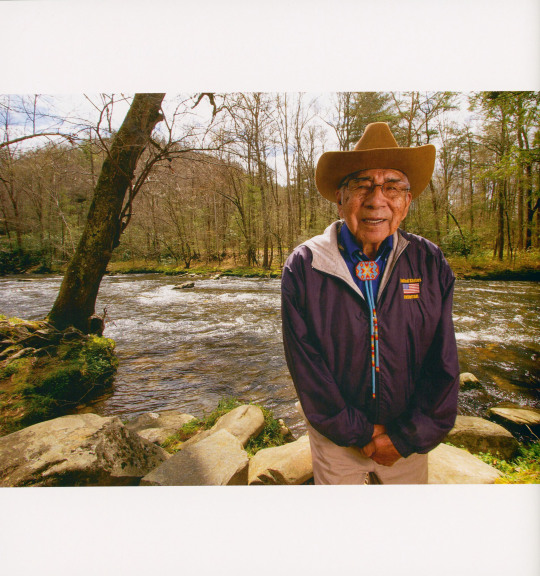
DR. JEREMIAH "JERRY" WOLFE
Eastern Band of Cherokee Indians
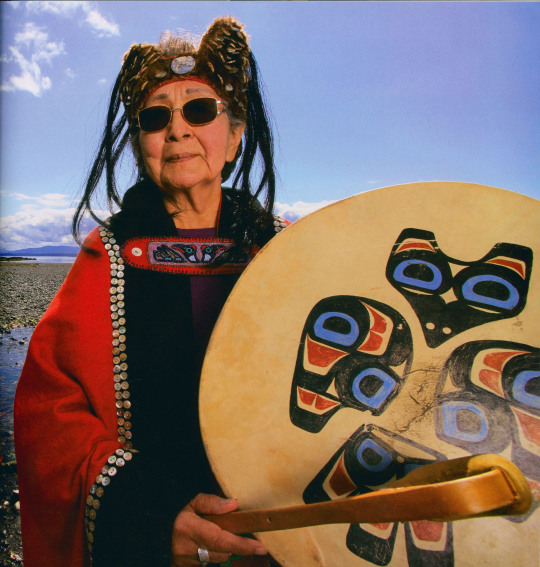
RUTH DEMMERT
Tlingit
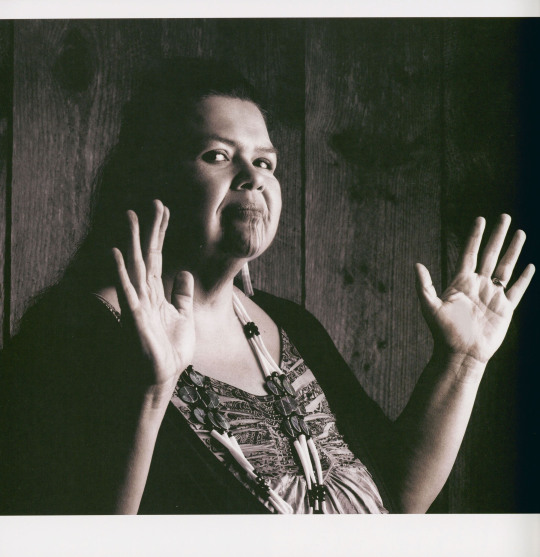
MARVA SII~XUUTESNA JONES
Tolowa Dee-Ni' Nation, Yurok, Karuk, Wintu
Matika Wilbur will be speaking on UW-Milwaukee's campus Thursday, November 16 from 6-7p.m. in conjunction with her exhibition Seeds of Culture: The Portraits and Voices of Native American Women on view at the Union Art Gallery November 16 through December 15, 2023.
-Jenna, Special Collections Graduate Intern
We acknowledge that in Milwaukee we live and work on traditional Potawatomi, Ho-Chunk, and Menominee homelands along the southwest shores of Michigami, part of North America’s largest system of freshwater lakes, where the Milwaukee, Menominee, and Kinnickinnic rivers meet and the people of Wisconsin’s sovereign Anishinaabe, Ho-Chunk, Menominee, Oneida, and Mohican nations remain present.
#indigenous people's day#matika wilbur#project 562#Ten Speed Press#Native Americans#holidays#UWM Native American Literature Collecton
831 notes
·
View notes
Text

CYBERPUNK 2077.
in continuity with claudette's CP2K77 verse.
jake park is a lone, wandering nomad that was formerly the son of one of the wealthiest businessmen in night city. the prodigal son & heir to an increasingly wealthy multi-national packaging company (Park Industries) that developed packaging for various industry powerhouses in the americas and south korea. with subsidiaries in landscaping and real estate. at the age of 20, he was infamously disowned by his father and went "missing" to the public eye for more than 5 years. at 26, he returned to civilization, welcomed back & supported by his mother; trying to restart his life with a new goal in mind:
helping the Tolowa Dee-ni’ and nomad nations (the jodes & thelas nations, specifically) to broker a lucrative, world-changing contract with biotechnica, and a brilliant botanist: dr. claudette morel.
within the first decade of the jodes nomads settling throughout california, conducting salvage operations and brokering construction contracts with megacorporations, they allied with Indigenous Tribes primarily operating out of the Tolowa Dee-ni’ Nation’s territory in the Tahquitz Canyon, wherein various neighboring Indigenous Nations worked together, surviving peacefully beyond NUSA’s reach ever since the USA dissolved. Indigenous people and their sovereign territories were ignored or outright abandoned by the federal government and Free States after the collapse. as america’s national forests and rivers began to burn, dry up, NUSA chose to prioritize urban redevelopment, americentrism, military inflation and corporatism in the city-states. corrupt news outlets failed to report on the government’s racist neglect suffered by America’s Indigenous peoples.
western civilization quickly forgot about the true "americans." many Indigenous nations across the americas (and the world) anticipated this, as the previous US federal and state governments had historically enforced a genocidal apocalypse upon Indigenous peoples and colonial victims for centuries. they began organizing, networking, and brokering alliances with Indigenous organizations globally, before and after the collapse. resources, technology, datashards, and skill shards were distributed among all Indigenous peoples, sharing knowledge over the course of more than a century (between 1989 and 2077), with the aid of nomad nations like the jodes and pro-indigenous independent companies like biotehnica and metacorp. they continue to nurture and protect the americas’ growing wilderness with the assistance of nomad nations, cultivating environmental science and agroecology, as the jodes search for old knowledge and valuable salvage that were lost after the collapse.
the contract with biotechnica would allow for a new era of industry handled by indigenous nations and nomads. the potential for seaweed and aquatic algae as a cheap, bountiful food and energy source that would be able to grow one billion tons of resources in just 6 months; including dry food, biofuel, bio-plastics, carbon-capture, and fertilizer. undersea agriculture can potentially be commercialized to provide a cheap alternative food source to the insects raised in protein farms, and aid with marine restoration to rebuild the local fish population.
it would change canada and NUSA's energy industry. royalties mass-distributed to the tribes.
jake park became involved because he wanted to support their cause, returing to night city in order to ask his family's blessing to retake his place as the heir to their entire legacy.
on one condition: they help him see this contract through.
#PARK ,JAKE.#MOREL ,CLAUDETTE.#SCRIPT.#cyperpunk 2077#potentially he also handles security sometimes since he works closely with the Grady Clan!#which is a whole other au thing from my jw blog lol#but yes gimme all the scifi plots#PLOTS.
4 notes
·
View notes
Text
First ever U.S. Indigenous Marine Stewardship Area declared in California
0 notes
Text
Can't find the post I saw on here first, but this has been playing in my brain every time I step out the door.
0 notes
Text

Tolowa Dee-ni' girls, United States of America, by Matika Wilbur
#tolowa dee-ni'#united states of america#america#north america#folk clothing#traditional clothing#traditional fashion#cultural clothing
1K notes
·
View notes
Photo

This weekend, check out language stories by community members themselves!
Less than 200 years ago, 90 Native languages and as many as 300 dialects were spoken in California. Today, only half are spoken but ambitious projects are revitalizing them.
Join us in listening to Emergence Magazine's Webby Award winning Language Keepers podcast on the stories of Wukchumni, Karuk, Kawaiisu, & Tolowa Dee-ni'.
https://emergencemagazine.org/story/language-keepers
55 notes
·
View notes
Link
Wanna see something pure and good? Check out this project to enrich some of California’s indigenous languages.
0 notes
Photo

Tolowa man in dancing headdress
6 notes
·
View notes
Link
The Tolowa people have survived a history of continued removal, genocide and discrimination within their homelands by the explorers, settlers, miners and ranchers who "colonized" the area. Our Government, Culture and Traditions survived colonialism and termination because we persisted and never gave up our identities. As the original inhabitants and stewards of the Smith River Plain and Estuary the Tolowa Dee-ni’ Nation has been presented with a quintessential opportunity to return a critical portion of our unceded ancestral territory back under the rightful ownership and management of the Tolowa Dee-ni’ Nation.

A summary of the settler-owners’ many environmental and coastal lands violations that prompted the sale. The Tolowa Dee-ni’ have shown their commitment to restoring damaged lands to health.
Learn some of the history of the Tolowa Dee ni’ people and more information about the Land in this StoryMap created by the Nation
Sign the Tolowa Dee-ni’ Nation’s petition
#tolowa#northern california#stolen land#tolawa dee ni'#petition#southern oregon#unceded territories#settler colonialism#smith river rancheria#native california#indigenous americans
0 notes
Text
All The Indigenous and Endangered Language Learning Apps You Need
2019 is the International Year of Indigenous Languages as designated by UNESCO. If you’ve not yet had a chance to learn a little of an indigenous language this year, I’m making it as easy as possible and bringing you a long list of minority, indigenous and endangered language learning apps.
Before we get to the list of apps, I’ve made you a video to explain the differences between minority/minoritised, indigenous, and endangered languages.
youtube
Free Ultimate List of Language Learning Resources
I’ve added a tab with the links to these apps to my huge and ever-growing free Google Sheets file the Ultimate List of Language Learning Resources. Woohoo!
Click the image below to get free access now.
Heads up: apps and tech is ever-changing. So if there’s something that no longer works on this list or you’ve got a suggestion for a new one that does, let me know!
Ok, ready? Let’s get into this. I’m going to order things by regions as best as possible. For each region, I’ll also be starting by listing some “bigger” apps you may already know that have courses/support for indigenous or endangered languages.
North America
Below you’ve got a list of apps and developers that are designed to help people learn indigenous languages from North America. I’m including Canada, USA, and Greenland in that, but not Mexico, the Caribbean and Central America. Languages from these places are included in the section below – Latin America.
Related: Language Stories – Episode 1: New York + The 7 Line
Memrise
Memrise has a selection of courses for indigenous Native North American languages, including…
Cherokee
Algonquian
Alutiiq
Choctaw
Citizen Potawatomi
Greenlandic
Inuktitut
Lakota
Other Native American Languages
Drops
Drops has a growing range of languages, including…
Hawaiian
Duolingo
Duolingo has you covered for two North American languages:
Navajo
Hawaiian
Master Any Language
Master Any Language is a website and app (Apple and Android) I discovered during my research for this article. And, wow, there’s a huge range of languages on it! Expect to see it listed under more regions below too.
Cree
Greenlandic
Inuktitut
Inupiaq
Navajo
Ojibwe
(and more I may have missed!)
File Hills Qu’Appelle Tribal Council Education Department
This developer has apps for a number of languages: Cree, Dakota, Lakota, Nakota, Saulteaux.
Prince Albert Grand Council
Prince Albert Grand Council has a couple of apps available for Swampy Cree and Dakota.
Binasii Inc
There’s a good number of apps from this developer for a range of languages: Dakota, Opaskwayak Cree, Saysi Dene, Long Plain Ojibway and more.
The Language Conservancy
The Language Conservancy has a large selection of apps for indigenous North American languages: Mandan, Hidatsa, Arikara, Cheyenne, Yanktonai, Keres, Nakoda, Crow, Omaha, Maskoke.
Miromaa Aboriginal Language and Technology Centre
There’s a small selection of apps from this developer for Pomoan languages, a language family from northern California: Northern Pomo, Central Pomo, Southern Pomo, bahtssal.
Ogoki Learning Systems Inc
Quite a few apps and languages here: Ojibway, Saulteaux, Blackfeet, Cree, Meskwaki, Northern Tutchone and more.
Thornton Media Inc
There’s Apple and Android apps for these languages from this developer: Cree, Mohawk, Tsuut’ina, Chickasaw, Yugtun, Omaha and more.
First Peoples’ Heritage Language and Culture Council
I love how much I’ve learnt from writing this post. Before, I had no idea about any of the languages that this developer has apps for: Xeni Gwet’in, Secwépemc, Hlgaagilda Xaayda Kil, and more.
Yamózha Kúé Society
Still in awe at how many apps there are out there for indigenous and endangered languages? There’s still more to come!
Yamózha Kúé Society has apps for these languages: Inuinnaqtun, Gwich’in, Shutaot’ine, South Slavey, Tlicho, NWT Cree, Denededline.
Christopher Horsethief
Christopher Horsethief has various apps out there for the following languages: Cree, Navajo, Muckleshoot, Osage, Ktunaxa, Salish.
Aidan Pine
Aidan Pine is the developer behind Mother Tongues, a company that’s (in their own words) “Committed to creating thoughtful language revitalization tools for people”, which is pretty exciting.
So far, there’s three apps available for Apple and Android: Inuttitut, Ayajuthem, Gitksan.
Gabriel Dumont Institute
Now we’re reaching the developers specialising with one language. The first is the Gabriel Dumont Institute with an app for Michif.
Pinnguaq
Pinnguaq have an app just for Inuktitut.
Smith River Rancheria Waa-tr’vslh-‘a~ Department
One app here for Tolowa Dee-ni’.
Samson Cree Nation
An app from this developer for Maskwacis Cree.
Dakota Iapi
There’s an Apple and Android version of this app for Dakota Iapi.
Lakota Language Consortium for Lakota
There’s a really helpful selection of apps for Lakota (media player, vocab, dictionary, and keyboard) from the Lakota Language Consortium.
Old Sun Community College for Blackfoot
There’s an app for Blackfoot from Old Sun Community College.
Neechee for Ojibwe
This app is a great verb help if you’re learning Ojibwe.
Wikwemikong Heritage Organization for Anishinaabemowin
There’s an Apple and Android version of this app to help you learn Anishinaabemowin.
Latin America
There’s some support here from bigger apps but also some great options you may not have heard of too!
Related: Language Stories: Guaraní in the Heart of South America – Episode 12
Memrise
Memrise has courses for Yucatec Maya, Guarani, Nahuatl, Quechua, and Ayamara (in Spanish).
Nahuatl (some more options designed for Spanish (Mexico) and Spanish (Spain) speakers.)
Yucatec Maya (plus a couple for Spanish (Spain) and Spanish (Mexico) speakers.)
K’iche’
Quechua (more listed under Spanish (Mexico) Spanish (Spain) speakers.)
Aymara: there’s a small number of courses listed under Spanish (Spain) and Spanish (Mexico) but none in English.
Guarani (and some more courses for Spanish (Spain) and Spanish (Mexico) speakers.)
Duolingo
If you switch your language on Duolingo to Spanish, you’ll be able to access the Guarani course. Note however, that this course is actually Jopara, the mix of Guarani and Spanish spoken by many people in Paraguay.
Master Any Language
Master Any Language has simple courses for Guarani, Quechua, and Aymara on Apple and Android on their main app.
Centro Cultural de España en México
There’s Apple and Android versions for these apps from the Centro Cultural de España en México for Náhuatl, Mixteco, and Purépecha.
John Garcia
John Garcia has created two apps for Mexican languages Mixteco and Nahuatl.
IIAP
There’s a couple now that are only on the Google Play Store (as far as I could find). This huge selection of apps from IIAP includes apps for Ashaninka, Taushiro, Bora, Quechua and more.
SimiDic
Another one that’s only on the Google Play Store. This is a dictionary app that translates between three South American languages: Aymara, Guarani, Quechua.
Runashimi
This app available for both Apple and Android is to help you with Quechua.
Guaranglish
I have to include this one! We actually spoke with the developers of the app Guaranglish for our podcast and video series Language Stories.
Niuki for Wixárika
Wixárika is a language spoken in parts of Mexico by nearly 45,000 people. This app focuses on that one language.
Australasia
In this section, we’ll cover apps for indigenous and endangered languages from Australia, New Zealand, and the South Pacific Islands.
uTalk
Maori is available on uTalk, as well as Samoan and Fijian.
Drops
Maori and Samoan are also both available on Drops.
Master Any Language
Maori, Samoan, Fijian, Tongan, Tahitian, Nauruan, Marshallese, and possibly more I’ve missed are all included on Master Any Language, which has apps for both Apple and Android. (Some languages don’t have their own app, and are available on the main ‘Master Any Language’ app.)
Victorian Aboriginal Corporation for Languages
The Victorian Aboriginal Corporation for Languages has developed a great range of apps for a selection of indigenous Australian languages including Tyalingi, Wadawurrung, Wemba Wemba, Taungurung and more.
Wiradjuri Condobolin Corporation Limited
Again, another chance to keep learning about languages I knew nothing about whilst I was wriitng this article!
Wiradjuri Condobolin Corporation Limited has both Apple and Android apps for Wonnarua, Yitha Yitha, Yorta Yorta, Mutti Mutti, Wiradjuri, Barngarla, and Nari Nari.
Benedict Foley
There’s a good selection of apps here for a variety of indigenous Australian languages including Pertame, Kune, Kayardilt, Gamilaraay, Yuwaalaraay, and many more. There’s even an app to help identify birds using a range of languages that are no longer spoken but have aboriginal bird names and knowledge to be shared.
NTLanguages
There’s Apple and Android versions of this collection of apps from NTLanguages for Anindilyakwa, Eastside Kriol, Ritharrngu, Tiwi, Wubuy
Pollen
Pollen have developed a few apps for the Yorta Yorta, Gamilaraay, and Yuwaalaraay languages.
Mawng
Available on both Apple and Android, this app is the work of linguists and community members on South Goulburn Island around 300km east of Darwin.
Yawuru Ngan-ga
This app has a dictionary and vocab lists for Yawuru Ngan-ga, a language spoken in Broome, Western Australia.
Tipu Te Reo Māori
Available on both Apple and Android, Tipu Te Reo Māori is an app to help you learn Maori.
Peter Akuhata
Another one for Māori!
Te Pūmanawa
More for Maori, this time available on Apple and Android.
AUT University
One more option here for Maori learners available on both Apple and Android.
TATAU
The final one of this little run of Maori options! TATAU is a little different though as it’s focused solely on counting.
SPIKIT
Designed to teach a selection of African languages, there’s also an option here for the Australian language of Yolunu. It’s available on Apple and Android.
Charles Darwin University
The LAAL Reader from Charles Darwin University is a really cool one. With stories in over 25 languages from the Northern Territories in Australia, it’s a good way to begin to learn more about aboriginal cultures and languages.
It’s available on both Apple and Android.
Government of Western Australia
Sharing the Dreaming is an app developed by the Government of Western Australia that shares Dreamtime stories, and words and translations in the Nyoongar language.
Indigenous Remote Communications Association
The Indigenous Remote Communications Associations have developed a few apps, mainly radio stations for indigenous languages in Australia. However, there’s also indigiTUBE, which, in their own words, is “the national online media platform by and for First Nations people, preserving language and culture for our future generations.”
Asia
According to Ethnologue, Asia actually has the most indigenous languages spoken and used there, closely followed by Africa.
In this section, I’m including the Middle East here as it’s not a region I know as much about. (If you do and can help me expand it into its own section, please do let me know!)
Also, seeing as it would be a whole host of other blog articles in itself to list all the apps out there for Chinese, Japanese, Hindi, Korean…etc, I’m focusing here on endangered languages in Asia. Even then, I’m having to be a little more specific and focus on endangered languages I already know of.
You know, to try and actually be able to publish this article at some point in my lifetime!
Related: Language Stories: Kristang – A Tale of Two Cities
Memrise
Memrise has a great range of courses listed for us here. These include…
Kristang (a creole language so not really classed as indigenous, but endangered, which is what we’re focused on for this section)
Ainu
Jeju
Western Armenian
uTalk
uTalk has a great number of indigenous Asian languages available, many are spoken by big numbers of people so not endangered, but I do want to give a mention here to uTalk for the sheer number of languages they’ve covered.
Master Any Language
Komi, a language spoken in Russia is available on Master Any Language. It’s on the main app on Apple or Android.
Africa
Again, so many indigenous languages in Africa that it’s tricky to know where to begin! And seeing as many people have never learnt an African language (myself included), I’m doing things a little differently here.
So instead, I’m focusing mainly on the key apps I’ve found that have courses in a wide range of indigenous African languages. Many have millions of speakers and yet you may never have heard of some of them! (I definitely learnt something new from putting this section together too!)
uTalk
Just like in regards to Asia, uTalk has a really exciting number of indigenous African languages available. Not all are endangered, but many are of course indigenous.
Memrise
Just from the Memrise groupings on the sidebar, there’s a lot to learn here…
Akan-Twi, Amharic, Hausa, Kaonde, Kinyarwanda, Luganda, Malagasy, Mandinka, Nyanja/Chichewa, Somali, Soninke, Swahili, Wolof, Zulu, and more.
SPIKIT
I mentioned SPIKIT above in the Australasia section because they have a simple course for a language spoken in Australia.
However, the moin focus of this app is Shona, Xhosa, Zulu, and Ndebele. And the good news is it’s on Apple and Android.
Master Any Language
So. many. options.
Master Any Language has really been one of the gems I’ve discovered writing this article. The interface is retro but that doesn’t matter when you’re short on resources. Their app is on both Apple and Android.
Europe
Again, obviously there’s English, French, Spanish, and many other widely spoken and studied languages spoken technically indigenously in Europe. However, to keep things simple, we’re going to focus on smaller indigenous European languages that may or may not be endangered.
uTalk
uTalk has a huge range of European languages including Welsh, Sicilian, Scottish Gaelic, Scots, Sardinian, Southern Saami, Neopolitan, Manx, Irish, Galician, Catalan, and Basque.
Memrise
Similarly to uTalk, Memrise has a large range of options here, including…
Basque
Breton
Catalan
Cornish
Corsican
Faroese
Galician
Ladino
Manx
Neapolitan
Occitan
Romani
Sami languages
Scots
Scottish Gaelic
Sicilian
Yiddish
Duolingo
Duolingo exists for Welsh and Catalan. Yay!
Master Any Language
There’s a whole range of European languages on Master Any Language including Cornish, Breton, Corsican, and more.
Remember that you can get this app on both Apple and Android.
SaySomethingIn…
A great series available in a range of indigenous British languages as well as a few others: Welsh and Manx available on apps, and more on their website.
Free Ultimate List of Language Learning Resources
And that’s the list! Yay!
Missed it at the start of the post? I’ve added a tab with the links to these apps to my huge and ever-growing free Google Sheets file the Ultimate List of Language Learning Resources. Woohoo!
Click the image below to get free access now.
Have you got an app that needs adding to this list? Let me know by sharing it in the comments below!
The post All The Indigenous and Endangered Language Learning Apps You Need appeared first on Lindsay Does Languages.
from WordPress https://ift.tt/2VJojVx
via IFTTT
91 notes
·
View notes
Link
Indigenous people have been in the region now called California for at least twelve thousand years. As recently as two hundred years ago, there were up to ninety distinct languages and three hundred dialects, stemming from twenty language families. It is one of the most linguistically—and ecologically—diverse regions in the world, with one of the highest rates of language loss. With Spanish settlement in the 1700s, widespread Christianization, the gold rush in the mid-1800s, and ensuing governmental policies that lasted well into the twentieth century, waves of forced assimilation, relocation, and disease washed over Native communities again and again. Today, only about half of these languages remain. They are rapidly disappearing with the last generation of fluent speakers; many languages, like Tolowa Dee-ni’, have just one or two speakers, and few children are learning the words or will remember their ancestors’ stories.
1 note
·
View note
Text
Still, We Live On: Film Showcases Tolowa Language Resilience and Revival | Humboldt NOW | Cal Poly Humboldt
0 notes
Photo

Ada Lopez Richards, Tolowa Woman, standing near the shore wearing hat, necklaces, and dress. - Curtis - 1923
The Tolowa people or Taa-laa-wa Dee-ni’ are a Native American people of the Athabaskan-speaking ethno-linguistic group. They still reside in their traditional territories in northwestern California and southern Oregon.
120 notes
·
View notes
Link
0 notes
Text
Department of Energy funds $9 million in tribal energy projects, includes solar
The U.S. Department of Energy (DOE) announced today nearly $9 million in funding for 15 tribal energy infrastructure projects. This funding through the DOE Office of Indian Energy Policy and Programs will help Native American and Alaska Native communities harness their vast undeveloped energy resources to reduce or stabilize energy costs, as well as increase energy security and resilience.
These energy projects, valued in total at nearly $25 million, are the result of a competitive funding opportunity announcement (FOA) announced February 16, 2018.
“This funding opportunity was the first time the Office of Indian Energy has solicited fuel- and technology-neutral projects, which expands the potential for tribes to utilize the particular resources they have available on their lands,” said U.S. Secretary of Energy Rick Perry. “These new projects exemplify this Administration’s all-of-the-above energy policy and principles of true tribal sovereignty.”
Through these selected projects, the Office of Indian Energy will continue its efforts to maximize the development and deployment of energy solutions in consultation with American Indians and Alaska Natives. Specifically, the projects will install energy systems on tribal buildings and on a community scale for beneficiary tribes and Alaska Native villages. They will provide systems for autonomous operation, thereby increasing community resilience.
In related news, the Office of Indian Energy also recently released the Tribal Energy Atlas—a first-of-its-kind interactive geospatial application that enables tribes to conduct their own analyses of installed energy projects and resource potential on tribal lands. Developed by researchers from DOE’s National Renewable Energy Laboratory, it’s the most robust tool ever designed to assist tribal energy project planners, technicians, and investors with analyzing energy options in Indian Country.
# Selectee and Location Project Description Total Award Value* 1 Alaska Village Electric Cooperative, Inc. (AVEC), Anchorage, AK AVEC and Stebbins Native Corporation, through a joint venture, will install a 900-kilowatt (kW) turbine to provide wind energy to two remote communities in rural Alaska. This project will serve 328 buildings in Stebbins and St. Michael, AK, and reduce diesel fuel use by approximately 167,500 gallons each year, resulting in savings of approximately $10,117,000 over 20 years. $6,823,308 (Requested DOE Funds: $1,000,000; Proposed Cost Share: $5,823,308) 2 Bishop Paiute Tribe, Bishop, CA Under this project, at least 108 kW of new solar photovoltaics (PV) will be installed on 38 existing owner-occupied, single-family homes for low-income families. This adds to the 118 solar electric systems, totaling over 404 kW of PV, already installed on residences on the Reservation. It is estimated that the additional solar will produce at least 175,000 kilowatt-hours (kWh) per year, replacing 30%-75% of the 38 homes’ total electricity use of 228,700 kWh per year, for a combined system lifetime electricity cost savings for the low-income homeowners of approximately $1 million. $539,502 (Requested DOE Funds: $269,751; Proposed Cost Share: $269,751) 3 Citizen Potawatomi Nation, Shawnee, OK Under this project, the Citizen Potawatomi Nation will install 4.0 megawatts (MW) of distributed generation powered by natural gas to reduce and stabilize energy costs, expand energy independence, and reduce the amount of coal-fired power currently consumed. The power will serve nine integral community facilities and the Nation’s senior housing complex. This project is expected to generate approximately 6,720,000 kWh per year, which represents approximately 42% of the current total energy load for the facilities served. $1,998,925 (Requested DOE Funds: $980,705; Proposed Cost Share: $1,018,220) 4 Coeur d’Alene Tribe, Plummer, ID The Coeur d’Alene Tribe will install energy efficiency measures (EEMs) and deploy a solar PV system for its senior housing complex. The current energy use for the common area averages 114,000 kWh per year, and the combination of the energy efficiency measures and solar PV deployment is expected to reduce energy use by 99,420 kWh/year—an 87% reduction that is expected to save $7,600 per year. $186,994 (Requested DOE Funds: $92,500; Proposed Cost Share: $94,494) 5 Ho-Chunk, Inc., Winnebago, NE Ho-Chunk, Inc., owned by the Winnebago Tribe of Nebraska, will install 320 kW of solar PV to serve nine tribal facilities, representing 221,600 square feet, and reduce electric use by approximately 6%. This project will add 320 kW of installed solar capacity to the existing 400 kW, for a total of 720 kW toward the Tribe’s near-term goal of 1 MW. $728,624
(Requested DOE Funds: $364,312; Proposed Cost Share: $364,312)
6 Newtok Village Council, Newtok, AK A heat recovery system will be installed that will transport heat from the generator cooling loops in the Village’s power plant to the community buildings. The project will also implement EEMs in the construction camp washeteria and bunkhouses to reduce overall heat demand and improve heat recovery system performance. Currently, these facilities are expected to use 7,720 gallons of heating fuel and 65,495 kWh per year. It is estimated that after implementation of the heat recovery system the facilities will see a 100% reduction in fuel use and a total cost savings of $109,710. $1,277,884 (Requested DOE Funds: $638,942**; Proposed Cost Share: $638,942) 7 Northern Pueblos Housing Authority, Santa Fe, NM The Picuris Pueblo, in partnership with the Northern Pueblos Housing Authority, is building on the success of their completed 1-MW solar PV system with the development of a second 1-MW solar system in northern New Mexico. The Pueblo of Picuris Community Solar System Phase II project will produce approximately 2.2 million kWh annually, with gross revenue of approximately $3,163,776 over 25 years through a power purchase agreement. $2,000,000 (Requested DOE Funds: $1,000,000; Proposed Cost Share: $1,000,000) 8 Penobscot Indian Nation, Indian Island, ME To further its long-term strategic energy plan, the Penobscot Indian Nation will install EEMs and a rooftop solar PV array during the construction of its new tribal administration building in Maine. The EEMs are estimated to save approximately $46,312 per year, and the 100-kW PV system will generate an estimated savings of $233,807 over a 25-year period. $490,510 (Requested DOE Funds: $245,255; Proposed Cost Share: $245,255) 9 Pribilof Islands Aleut Community, St. Paul Island, AK This project will replace refrigeration equipment and display cases with energy efficient systems; utilize waste heat to provide heat; and lower the cost of energy and maintenance for the Aleut Community Store located on St. Paul lsland, AK. As a result of this project, the community is expected a reduction in building energy and maintenance costs of $44,385 annually. Once these and additional building EEMs are complete, the annual savings will be directed to reducing the cost of groceries, thereby lowering the cost of living for community members. $1,006,363 (Requested DOE Funds: $491,623; Proposed Cost Share: $514,740) 10 Rosebud Sioux Tribe Tribal Utilities Commission, Rosebud, SD Under this project, 250 kW of solar PV will be installed to offset approximately 45% of the electric load of the 30 housing units and one community building that comprise the Sicangu Village. This will save an estimated $38,026 annually and $951,875 over 25 years. As part of the project, tenants will receive energy efficiency education to reduce energy consumption, and local trainees will be recruited to assist in the installation providing a number of jobs. $897,000 (Requested DOE Funds: $448,500; Proposed Cost Share: $448,500) 11 San Pasqual Band of Indians, Valley Center, CA This project will install a hybrid solar-storage-liquid propane microgrid system comprised of 184 kW of PV capacity, 150 kW / 300 kWh of batteries, and 44 kW of standby generation. This microgrid will power essential loads for five separate but adjacent buildings owned and operated by the Tribe. This project is expected to substantially eliminate long-duration disruptions to essential tribal services due to utility outages, and save approximately $45,190 in electric energy costs per year, or $1.13 million over the system’s 25-year useful life. It is also expected to reduce net electric energy imports to the reservation by approximately 278,300 kWh per year by reducing consumption for the five buildings by 96%. $1,396,636 (Requested DOE Funds: $698,318; Proposed Cost Share: $698,318) 12 Seminole Tribe of Florida, Hollywood, FL Under the Seminole Rural Reservation Resiliency Initiative, 563 kW of solar PV and approximately 700 kWh of battery storage, along with transfer switches and control systems, will be installed on the rural Reservations of Brighton and Big Cypress to service eight essential community facilities. The integrated system is intended to provide reliable energy during repeated grid outages and other failures caused by major storms or other events, and to lower energy costs in this high-energy-cost rural area. Specifically, the project is expected to reduce Tribal utility energy costs by approximately $4,908,291 over the 35-year life of the system, save the Tribe several thousands of dollars per year in costs for the existing diesel generators, and create jobs. $2,027,366 (Requested DOE Funds: $1,000,000; Proposed Cost Share: $1,027,366) 13 Spirit Lake Tribe, Fort Totten, ND The Spirit Lake Tribe will install a 1.5-MW wind turbine to provide low-cost electricity to tribal members, displacing approximately 62% of the electricity used by 12 tribal facilities and approximately 350 residential consumers, which will result in annual savings of approximately $500,000. $4,190,975 (Requested DOE Funds: $1,000,000; Proposed Cost Share: $3,190,975) 14 Tolowa Dee-ni’ Nation, Smith River, CA This project will install 113.4 kW of solar PV to meet electric power needs at a Tribally owned fish hatchery in northern California. Once the system is installed, 75%- 80% of electrical energy use will be replaced with solar energy, and an equivalent portion of the total $36,000 in annual electricity costs eliminated. $499,592 (Requested DOE Funds: $249,796; Proposed Cost Share: $249,796) 15 Unalakleet Native Corporation, Unalakleet, AK The Unalakleet microgrid is currently powered by a wind-diesel system comprised of four 475-kW diesel gensets and six 100-kW wind turbines. This project will upgrade and increase voltage on the transmission line, and improve the control and data acquisition system and associated data management systems in the power plant. These upgrades will increase wind penetration from 22.9% of total electric production up to 37.4%, which represents a savings of 43,933 gallons of diesel fuel each year (equivalent to an annual savings of $131,799 in fuel) and will reduce annual maintenance costs by approximately $33,800. $716,504
(Requested DOE Funds: $356,354; Proposed Cost Share: $360,150)
Award amounts shown are subject to negotiation. The amount of requested DOE funds exceed the maximum specified in the FOA and will be reduced during negotiations to comply with FOA requirements.
To learn about DOE’s recent investments in tribal communities, visit the Office of Indian Energy’s project successes page.
News item from the U.S. Department of Energy
The post Department of Energy funds $9 million in tribal energy projects, includes solar appeared first on Solar Power World.
0 notes